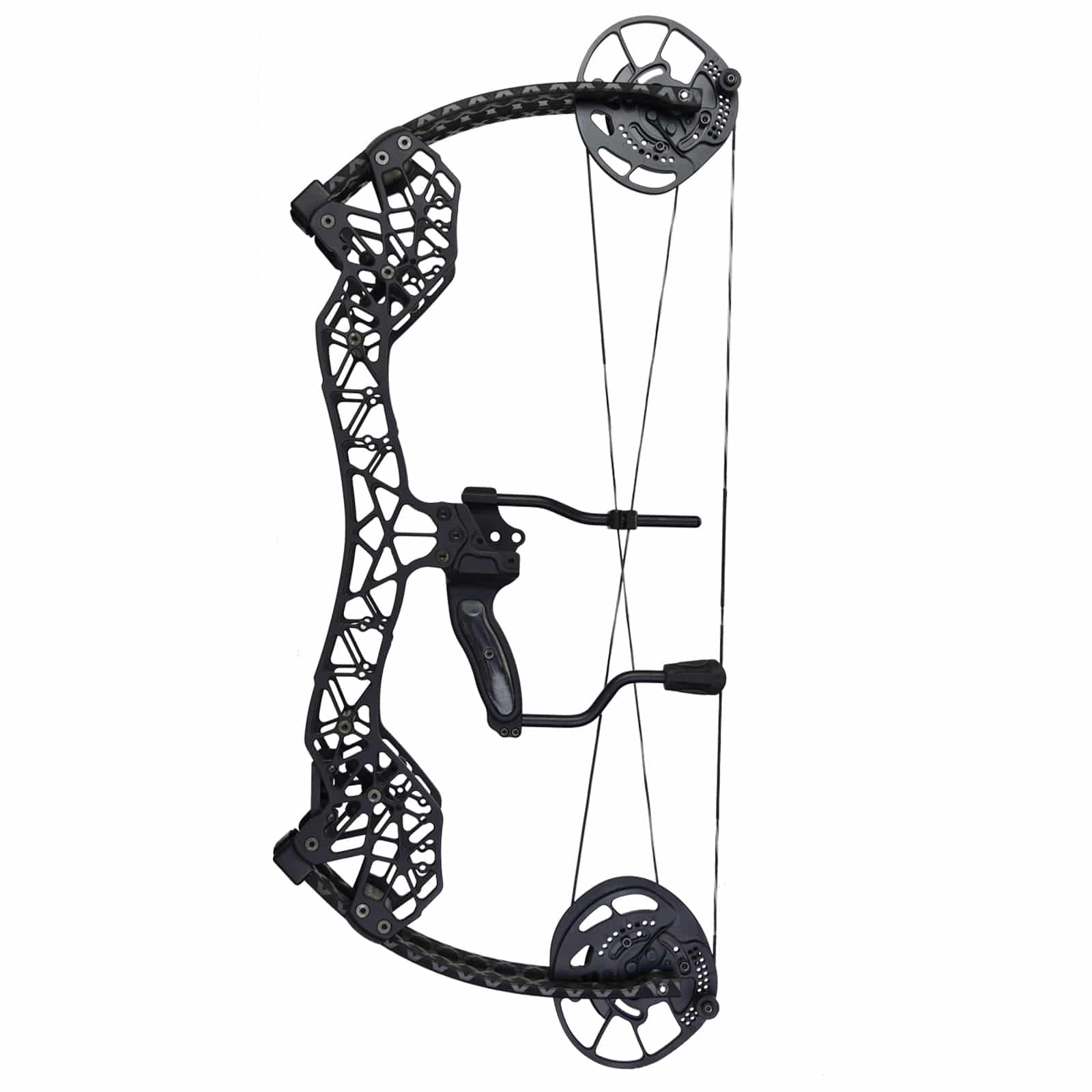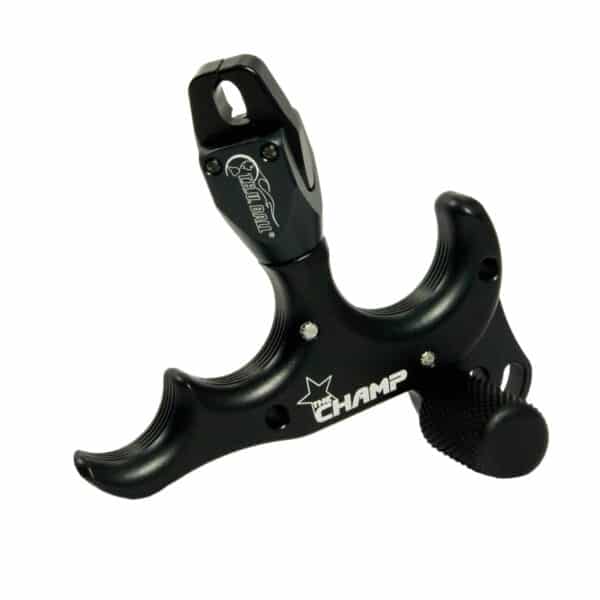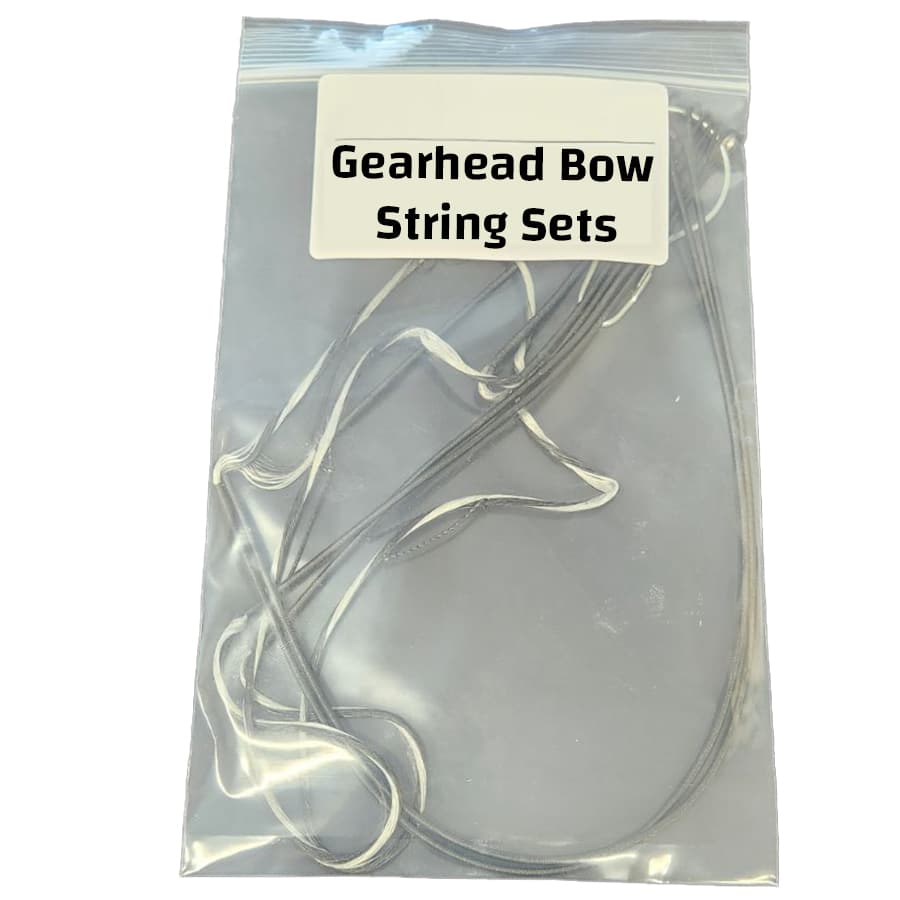Regulations
You’ve Got Questions on State Regulations?
We’ve Got Answers!
Alabama - Legal
No Size Restrictions
Alaska - Legal
Hunting big game with a bow, UNLESS: — the bow is at least: – 40 pounds peak draw weight when hunting deer, wolf, wolverine, black bear, Dall sheep, and caribou; – 50 pounds peak draw weight for hunting mountain goat, moose, elk, brown bear, muskox, and bison; — the arrow is at least 20 inches in overall length, tipped with a broadhead, and at least 300 grains in total weight; — the broadhead is a fixed, replaceable or mechanical/retractable blade type and not barbed.
Arizona - Legal
No Size Restrictions
Arkansas - Legal
Long, recurve and compound bows: Must have at least a 40-pound pull. Scopes may not be used. String locks and mechanical string releases may be used. Deer, turkey and bear hunters are required to use arrowheads at least 7/8-inches wide. Poison may not be used on arrows. Mechanical broadheads allowed.
California - Legal
Bow, as used in these regulations, means any device consisting of a flexible material having a string connecting its two ends and used to propel an arrow held in a firing position by hand only. Bow, includes long bow, recurve or compound bow.
Colorado - Legal
- a. Hand-held bows, including compound bows, must use arrows with a broadhead having a minimum 7/8-inch outside diameter or width and minimum of two steel cutting edges. Each cutting edge must be in same plane for entire length of cutting surface.
- b. Only legal, hand-held bows allowed during archery seasons.
- c. Minimum draw weight of 35 pounds required. Let-off maximum of 80 percent.
- d. No part of bow’s riser (handle) or track, trough, channel, arrow rest or other device (excluding cables and bowstring) that attaches to riser can contact, support and/or guide the arrow from a point rearward of the bow’s brace height behind the undrawn string.
- e. Bows can propel only a single arrow at a time. No mechanisms for automatically loading arrows allowed.
- f. NEW! Scopes, electronic or battery-powered devices cannot be incorporated into or attached to bow or arrow, with the exception of lighted nocks on arrows. Recording devices such as cameras or video recorders attached to bows may be used as long as they do not cast light toward the target or aid in range finding, sighting or shooting the bow.
- g. Hydraulic or pneumatic technology cannot be used to derive or store energy to propel arrows. Explosive arrows prohibited.
Connecticut - Legal
Delaware - Legal
No person shall use a compound, recurve, or longbow with a pull weight less than 35 pounds.
Florida - Legal
No person shall use a bow less than 35 pounds.
Georgia - Legal
No size restrictions.
Hawaii - Legal
Idaho - Legal
With any bow having a peak draw weight of less than 40 pounds up to or at a draw of 28 inches or any crossbow having a peak draw weight of less than 150 pounds. With any compound bow set at more than 85 percent let-off. With an arrow or bolt, and broadhead with a combined total weight of less than 300 grains. • With an arrow less than 24 inches from broadhead to nock inclusive.
Illinois - Legal
Vertical bows, limited to longbows, recurve bows, or compound bows with minimum pull of 40 pounds at some point within a 28-inch draw. Minimum arrow length is 20 inches. Any mechanical device capable of maintaining a drawn or partially drawn position on a vertical bow without the hunter exerting full string tension is illegal.
Indiana - Legal
Legal equipment includes long bows, compound bows or recurve bows and arrows. The bow must have a pull of at least 35 pounds. No portion of the bow’s riser or any track, trough, channel, arrow rest or other device that attaches to the bow’s riser can guide the arrow from a point back beyond the bow’s brace height. The common overdraw is still allowed as long as it does not extend beyond the string when the bow is relaxed.
Iowa - Legal
Longbows, recurve bows, and compound bows shooting broadhead arrows are permitted. No explosive or chemical devices may be attached to the arrow or broadhead. There are no minimum draw weights for bows or minimum diameter for broadheads. Arrows must be at least 18 inches long. Draw locks on compound bows are legal.
Kansas - Legal
Does not have a minimum bow weight, draw length or bow length.
Kentucky - Legal
No Size Restrictions
Louisiana - Legal
- Traditional bow, compound bow, and crossbow, or any bow drawn, held or released by mechanical means.
Maine - Legal
Deer may be taken under the archery provisions only by means of hand-held bow with a minimum draw weight of 35 pounds, and broad-head arrow. Arrow heads must be at least 7/8 inch in width.
Massachusettes - Legal
For hunting deer and bear, the vertical bow shall have a full draw and pull of not less than 30 pounds.
Michigan - Legal
No Size Restrictions
Minnesota - Legal
Bows must have a pull no less than 30 pounds at or before full draw.
Mississippi - Legal
Longbows, recurves, compound bows, and crossbows. There is no minimum or maximum draw weight. There is no minimum arrow length. Fixed or mechanical broadheads may be used.
Montana - Legal - T24; Not legal -T-18, T-20
A bow is considered legal if it is at least 28 inches in total length. Bows shorter than 28 inches are prohibited for use in Montana. In another example, an arrow is defined as a projectile at least 20 inches in overall length. An arrow must weigh no less than 300 grains with the broadhead attached. Crossbows are not a legal weapon during the archery equipment only season.
Nebraska - Legal
Long bow, compound bow, recurve bow, shoulderfired non-electronic crossbow (with a draw weight of at least 125 pounds), hand-thrown spear.
New Hampshire - Legal
Archers must have their name and address on arrows. Fixed blade broadheads cannot be less than ⅞ inches wide and not more than 1½ inches wide. Retractable blade broadheads are permitted (cannot be less than ⅞ of an inch wide when open). Minimum draw weight for deer is 40 lbs.
New Jersey - Legal
35 pounds pull at archer’s draw length (long and recurve bows) or peak weight (compound bow) or 75 pound minimum draw weight (crossbow)
New Mexico - Legal
Includes compound, recurve and longbows. Sights on bows may not magnify targets or project light. Arrows must have broadheads (fixed or mechanical) with steel cutting edges. No drugs may be used on arrows. Arrows cannot be driven by explosives.
New York - Legal
A bow with a draw weight of 35 lbs or less is not legal.
North Carolina - Legal
Archery hunting is limited to longbows and recurved bows having a minimum pull of 40 pounds, com pound bows with a minimum pull of 35 pounds and crossbows with a minimum draw weight of 100 pounds. Only arrows with a fixed minimum broadhead width of 7/8 inch or a mech an ically opening broad head with a minimum width of 7/8 inch in the open position may be used for taking bear, deer or wild turkey. Blunt-type arrowheads may be used in taking small animals and birds, including but not limited to, rabbits, squirrels, quail, grouse, pheasants. Poisonous, drugged, barbed or explosive arrowheads may not be used for taking any game. Bolts must use broadheads as described for arrows
North Dakota - Legal
A bow must be pulled, held and released by hand. Any release aid may be used providing it is hand operated, the shooter supports the draw weight of the bow, and the release is not attached to any part of the bow other than the bowstring. Bows used for hunting elk and moose must have at least (35 for deer), 50 pounds of draw at 28 inches or less draw length. Arrows must be at least 24 inches long, tipped with a metal broadhead, with at least two sharp cutting edges, and have a cutting diameter of at least 3/4 inch (i.e., not able to pass through a 3/4 inch unbarbed and have fixed blades (i.e., broadheads with mechanical or retractable blades manufactured to stay open are illegal). Telescopic sights, range finding devices, battery-powered or electronically lighted sights or other electronic devices attached to the bow, or the arrow, are not permitted, except a lighted nock and recording devices which do not aid in range finding, sighting or shooting the bow are permitted.
Ohio - Legal
Longbows and crossbows may be used to take legal game. However, crossbows may not be used to hunt migratory game birds. Longbow hunters may use a hand-held mechanical release or a mechanical device with a working safety. Crossbows may be cocked with a device, but must have a working safety and a stock more than 25 inches long.
Oklahoma - Legal
Any compound bow of 30 pounds or more draw weight; any recurve, longbow or self-bow of 40 pounds or more draw weight. Hand-held releases are legal. Devices that permit a bow to be held mechanically at full or partial draw are allowed.
Oregon - Legal
40 lbs or greater in draw weight for everything but elk. Elk is 50 lbs or greater in draw weight.
Pennsylvania - Legal
Long, recurve or compound bows with a peak draw weight not less than 35 pounds, and crossbows with a draw weight of not less than 125 pounds, and not more than 200 pounds. Bowhunters must use arrows equipped with broadheads having an outside diameter of at least 7/8-inch with no less than two cutting edges, which shall be in the same plane throughout the length of the cutting surface.
Rhode Island - Legal
Long bow, re-curve bow and compound bow must be set at not less than forty (40) pounds for archers using fixed blade broadheads, and a minimum of fifty (50) pounds for archers using a mechanical broadheads. Only broadhead tipped arrows with at least two (2) metal cutting edges are allowed. All broadheads must be 7/8 of an inch or greater at the widest point. including mechanical broadheads measured in the “open” position. Licensed deer hunters may carry one blunt or judo tipped arrow to hunt the open portion of the small game season during the archery deer season.
South Carolina- Legal
Archery means a longbow, recurve bow, compound bow or crossbow (50-11-565). There are no restrictions on draw weight/length, arrow weight/length, or broad head weight, width, or style.
South Dakota - Legal: T24 Not Legal: T18, T20
A person hunting with bow and arrow may not use or possess any of the following: – Explosive, poisonous, hydraulic, or pneumatic points; – Crossbows and draw-lock devices that hold the bow at partial or full draw except as provided in chapter 41:09:12; – Arrow rests that have more than three inches of continuous contact with the arrow; – Electronic devices mounted to the bow that aid in the taking of game. However, cameras, video cameras, cell phones used exclusively for photographic purposes, lighted sight pins, and illuminated arrow nocks may be used; – Electronic arrow or electronic string releases; – Compound bows with a let off of more than 80 percent; – Compound bows shorter than 28 inches as measured from the top of the upper wheel or cam to the bottom of the lower wheel or cam;- An arrow, including the attached broadhead, weighing less than 275 grains when hunting a big game animal; – An arrow that is less than 26 inches long when measured from the notch of the nock to the end of the shaft, not including the blunt or broadhead; – An arrow without a broadhead (fixed or mechanical) that has at least two metal cutting edges when hunting a big game animal, except blunt points may be possessed and used when hunting a turkey and both field points and blunt points may be possessed and used when hunting small game or at any time when possessed and used as practice arrows; or – A bow that measures less than 50 pounds pull when hunting an elk with a mechanical broadhead or a bow that measures less than 40 pounds pull when hunting any other big game animal with a mechanical broadhead; – A bow that measures less than 40 pounds pull when hunting an elk with a fixed blade broadhead or a bow that measures less than 30 pounds pull when hunting any other big game animal with a fixed blade broadhead.
Tennessee - Legal
No size restrictions
Texas - Legal
There is no minimum draw requirement for longbows, compound bows or recurved bows.
Utah - Legal
The minimum bow pull is 40 pounds at the draw or the peak, whichever comes first.
Vermont - Legal
No Size Restrictions
Virginia - Legal
No Size Restrictions
Washington - Legal
It is unlawful for any person to hunt big game animals with a bow that does not produce a minimum of 40 pounds of pull measured at twenty-eight inches or less draw length. It is unlawful to hunt big game animals with any arrow measuring less than 20 inches in length or weighing less than 6 grains per pound of draw weight with a minimum arrow weight of 300 grains.
West Virginia - Legal
No size restrictions
Wisconsin - Legal
Crossbows and bow and arrows may be used by any person hunting under the authority of a gun deer license during any firearm (i.e., gun deer or muzzleloader) deer season. Note: when hunting under the authority of an archer license, only bows and arrows are allowed. When hunting under the authority of a crossbow license, only a crossbow is allowed. For hunting deer, bows must have a draw weight of 30 pounds or greater, and metal broadheads must be at least 7/8 of an inch wide and kept sharp. Stone arrow heads may be used. Crossbows must have a minimum draw of 100 pounds, a working safety, and use at least 14-inch long bolts or arrows equipped with broadheads as described above. Bows equipped with a drawlock mechanism that is capable of holding the bow at full draw without the aid of a hunter are considered crossbows. These are exempt from the 100-pound requirement but must meet the 30-pound minimum draw weight.
Wyoming - Legal
For the taking of antelope, big horn sheep, black bear, deer, goat, mountain lion or gray wolf where designated as a trophy game animal, a hunter shall use a longbow, recurve bow or compound bow of not less than forty (40) pounds draw weight and an arrow equipped with a broadhead or expanding point designed to have a minimum cutting width of one (1) inch after impact. For the taking of elk, grizzly bear, or moose, a hunter shall use a longbow, recurve bow or compound bow of not less than fifty (50) pounds draw weight and an arrow equipped with a broadhead or expanding point designed to have a minimum cutting width of one (1) inch after impact.


















